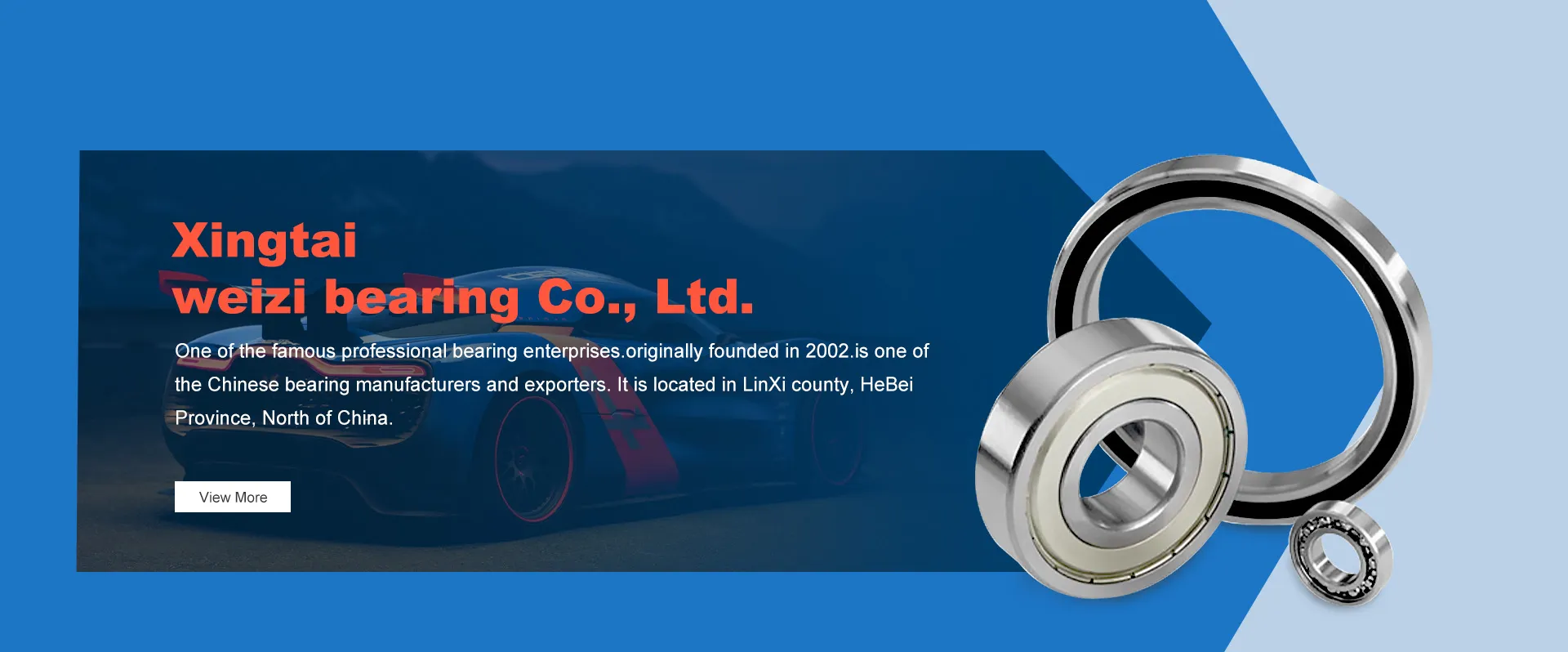
Dec . 12, 2024 02:12 Back to list
double row self aligning spherical roller bearing
Understanding Double Row Self-Aligning Spherical Roller Bearings
Double row self-aligning spherical roller bearings are essential components in various industrial applications, providing superior performance and reliability. These bearings are designed to accommodate misalignment, which is critical in applications where shaft deflection or mounting errors may occur. This article delves into their design, functionality, benefits, applications, and maintenance considerations.
Design and Structure
Double row self-aligning spherical roller bearings consist of two rows of spherical rollers that are held in place by a common inner ring and two outer rings. The unique design allows for angular misalignment between the shaft and housing, making them particularly suitable for applications where alignment may be compromised. The spherical shape of the rollers enables smooth rotation and evenly distributes load over the bearing surface.
These bearings are equipped with a cage, which functions to separate the rollers and allow for a smooth movement. They are typically made from high-quality steel, which provides durability and resistance to wear. Additionally, these bearings can be designed with seals or shields to prevent contaminant ingress and retain lubrication, enhancing their lifespan and performance.
Functionality
The primary function of double row self-aligning spherical roller bearings is to support radial loads while providing a degree of axial load accommodation. This is particularly advantageous in environments where machinery may experience twisting, bending, or other forms of misalignment. The self-aligning feature significantly reduces wear and tear on both the bearing and the associated components, ultimately leading to improved operational efficiency.
These bearings can handle heavy loads and are known for their robustness. Their ability to align automatically helps prevent premature failure, a frequent cause of downtime in machinery. This characteristic is especially vital in applications that involve high loads and continuous operation.
Benefits
There are several advantages to using double row self-aligning spherical roller bearings
double row self aligning spherical roller bearing

1. Misalignment Tolerance Their inherent design allows for angular misalignment up to a certain degree, reducing the need for precise alignment during installation. 2. High Load Capacity These bearings can bear significant radial loads, making them ideal for heavy machinery and industrial applications.
3. Durability Constructed from tough materials and often protected with seals, they resist wear, corrosion, and contamination, thus extending their service life.
4. Lower Maintenance Needs Because of their design, they require less frequent adjustments and replacements, helping to reduce operational costs.
5. Versatility They are used across various industries, including wind turbines, mining, construction, and agricultural machinery.
Applications
Double row self-aligning spherical roller bearings find use in numerous applications. Some common examples include
- Heavy Machinery Used in construction and earth-moving equipment where loads are substantial and misalignment commonly occurs. - Mining Equipment Ideal for supporting large shafts in crushers, conveyors, and other equipment. - Wind Turbines Employed in gearboxes and other mechanisms where flexibility and load capacity are essential. - Agricultural Equipment Frequently utilized in combines and tractors that operate under challenging conditions.
Maintenance Considerations
To ensure optimal performance, regular maintenance is crucial. This involves monitoring for signs of wear, ensuring proper lubrication, and checking for misalignment. Implementing a periodic inspection schedule can help identify issues before they lead to failure, thereby extending the lifespan of both the bearing and the equipment it supports.
In conclusion, double row self-aligning spherical roller bearings are a vital technology in many industrial applications. Their robust design, ability to accommodate misalignment, and high load capacity make them indispensable in maintaining efficient and reliable machinery operations. With proper maintenance and care, they can provide long-lasting performance in even the most demanding environments.
Latest news
-
Spherical Roller Bearings Applications: Heavy Duty, Self-Aligning
NewsAug.30,2025
-
Premium Deep Groove Ball Bearings | High Speed & Reliability
NewsAug.29,2025
-
Durable Scaffolding Clamps - Secure & Reliable Tube Connectors
NewsAug.28,2025
-
Common Failures in Thrust Ball Bearings and Solutions
NewsAug.22,2025
-
How Tapered Roller Bearings Can Take Shock Loads
NewsAug.22,2025
-
Angular Bearings in High-Precision Spindles
NewsAug.22,2025
